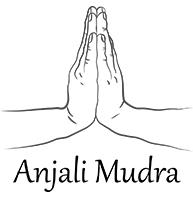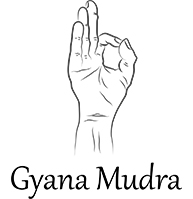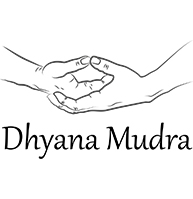Glossary of terms you might hear in your Yoga class
10 September 2019, Katie Michael

Whether you have been practicing yoga for a while or have just started, you may be struggling to understand some of the yoga terms or ‘cues’ used during the class. What is ‘engage your Mula Bandha’, or ‘lift your sitting bones’ and where are they? I thought it might be helpful to give a simple explanation of some of these.
Most yoga terms are sanskrit words and these are written in italics.
Asana literally translates as ‘seat’, but the more modern interpretation of the word denotes the physical postures or poses of yoga.
Bandha is an internal muscular ‘lock’ that, when engaged, supports the toning and lifting of strategic areas of the body. There are three major bandhas which might be referred to during a class and one that involves engaging all three.
- Jalandhara Bandha—the throat
- Mula Bandha—the pelvic floor muscles
- Uddiyana Bandha—the abdominals up to the diaphragm (drawing your navel into the spine)
- The engagement of all three at the same time is known as the Maha Bandha, or the great lock.
Chakra means ‘wheel’. Chakras are energy centres in the body located vertically between the base of the spine and the top of the head. Each chakra has a colour associated with it, and these may follow the visual colours of the rainbow. Chakras cannot be seen but have powerful influences. The individual chakras can be thought of as stores that hold information, energy, memory, feeling, emotion, anticipation and expectation. There are seven chakras:
- The Root (Muladhara) Chakra—base of the spine
- The Sacral (Svadhisthana) Chakra—lower abdomen
- The Solar Plexus (Manipura) Chakra—upper abdomen
- The Heart (Anahata) Chakra—centre of the chest
- The Throat (Vishuddha) Chakra—throat area
- The Third eye (Ajna) Chakra—forehead, between the eyebrows
- The Crown (Sahasrara) Chakra—the very top of the head

Chaturanga Dandasana translates as the four-limbed staff pose, commonly known as low plank.
Core is often thought of as the abdominal muscles. However, you can think of it like a rod running from the top of your head to the soles of your feet.
Cues are instructions from your teacher to help you find the right alignment in an asana.
Downward Facing Dog (Adho Mukha Svanasana) is one of the most common yoga poses, like an inverted ‘V’ shape.
Dhyana is the seventh of the ‘Eight Limbs of Yoga’ (see Patanjali). It is meditation: reflection, observation, steadying the mind and quieting mental clutter or the ‘Monkey Mind’.
Drishti is the focal point of gazing during your yoga practice (useful during balancing poses!) or meditation.
Hatha is recognised as yoga for the physical body. In Sanskrit, ‘Ha’ represents sun and ‘tha’ represents moon. Hatha yoga forms the basis for most physical styles of yoga, and is often used to describe slower-paced classes with no flow to them. It uses physical asanas, breathing techniques (pranayama) and meditation (see Dhyana) to achieve better health.
Kapalabhati is a breathing exercise that consists of sharp, forceful breathing out and gentle breaths in.
Mantra is a word, sound or phrase repeated either out loud (chanting) or in the mind; it is said to increase concentration while meditating.
Mudra in Sanskrit means seal. It’s a hand gesture (position) to aid concentration, focus and connection to yourself during your meditation and asana practice. Mudras carry specific goals of directing the flow of energy (Prana) in your body. As our hands are sites of sensory reception, they have a deep connection with the brain. Thus, the way we hold our hands can influence our mind. There are more than 100 known mudras, which have developed over the centuries. The most common are:
 Anjali Mudra (the salutation seal). Anjali in Sanskrit means ‘to offer’ or ‘to salute’. It is done by pressing the palms together evenly as in prayer, resting the thumbs lightly on your sternum. You are literally gesturing unification of the self and connecting both sides of the brain. Pressing the palms together means respect and pressing the tips of the fingers together stimulates the pressure points of eyes, ears and mind. Anjali Mudra is an excellent way to induce a meditative state of awareness.
Anjali Mudra (the salutation seal). Anjali in Sanskrit means ‘to offer’ or ‘to salute’. It is done by pressing the palms together evenly as in prayer, resting the thumbs lightly on your sternum. You are literally gesturing unification of the self and connecting both sides of the brain. Pressing the palms together means respect and pressing the tips of the fingers together stimulates the pressure points of eyes, ears and mind. Anjali Mudra is an excellent way to induce a meditative state of awareness. Gyana/Chin Mudra (the consciousness seal). From Sanskrit, chin (or cin) means ‘consciousness’ and mudra means ‘gesture’ or ‘seal’. Therefore, chin mudra may be translated to mean ‘gesture of consciousness’ in English. This mudra is often used while meditating, it is one of the most important mudras that promote physical and mental health. To perform gyan/chin mudra, bring the tips of the thumb and index fingers together and form a circle. Keep the remaining three fingers stretched and the palm facing upward.
Gyana/Chin Mudra (the consciousness seal). From Sanskrit, chin (or cin) means ‘consciousness’ and mudra means ‘gesture’ or ‘seal’. Therefore, chin mudra may be translated to mean ‘gesture of consciousness’ in English. This mudra is often used while meditating, it is one of the most important mudras that promote physical and mental health. To perform gyan/chin mudra, bring the tips of the thumb and index fingers together and form a circle. Keep the remaining three fingers stretched and the palm facing upward. Dhyana Mudra (the meditation seal) is done by placing the back of the right hand on the palm of the left hand with both hands resting in the lap. This give you a sense of balance with your hands held together in this way. It coordinates the right and left hemispheres of the brain and unites all opposites.
Dhyana Mudra (the meditation seal) is done by placing the back of the right hand on the palm of the left hand with both hands resting in the lap. This give you a sense of balance with your hands held together in this way. It coordinates the right and left hemispheres of the brain and unites all opposites.
Nadi are the energy channels through which prana (life force) flows. There are 72,000 nadis all connected by the chakras which charge them. Pranayama (breathing exercises) use the breath to direct and expand the flow of prana in our nadis (energy channels) to every cell of the body. The flow of prana is also enhanced through the practice of asanas.
Nadhi Sodhana is a breathing exercise through alternate nostrils.
Namaste roughly means ‘the light within me bows to the light within you—I bow to the divine in you’. It is generally said at the end of a yoga class, with a slight bow, hands pressed together, palms touching, fingers pointing upwards and thumbs close to the heart.
Om (A-U-M) is a mantra usually chanted at the beginning and end of a yoga class. It is a tiny word with a multitude of meanings—said to be the origin of all sounds and the seed of creation. Often quoted as the ‘universal sound of consciousness’.
Patanjali was an ancient sage (guru) who organised yoga into an ‘eight limbed path’, which he detailed in his Yoga Sutras, a guide or ‘instruction manual’ on how to live in order to advance along a spiritual path towards enlightenment.
Prana is life force or life energy. Prana is often categorised into different vayus. Vayu means ‘wind’ or ‘air’, with each prana vayu described as a different way in which that prana moves through the body. Traditionally, when these vayus are functioning optimally, they help the mind improve its function and allows us to realise our greatest potential.
Pranayama are breathing exercises which clear the physical and emotional obstacles in our body to free the breath and so the flow of prana life energy.
Sacrum is a triangular-shaped bone in the lower back.
Shanti is Sanskrit for ‘peace’ and is often chanted three times in class.
Sthirah is Sanskrit for strength.
Sukham is Sanskrit for softness.
Savasana means corpse pose or relaxation pose. It is typically performed at the end of a yoga class.
Sitting bones are part of the pelvis: the two bony protrusions on the underside of the buttocks that are most easily felt when sitting on a hard surface.
Sternum is the breastbone, a long, flat narrow bone that runs vertically down the centre of the chest.
Surya Namaskar is Sanskrit for Sun Salutations—a sequence of asanas. This dynamic sequence is very popular and is often used to warm up the body at the start of a yoga class.
Tailbone is the little bone at the end of your spine known as the coccyx.
Ujjayi commonly translated as the ‘victorious breath’ or ‘ocean breath’, because of the sound the breath makes at it enters and leaves a slightly constricted throat.
Vinyasa is movement linked with breath. Asanas are strung together in a short or longer flow.
Yoga means to ‘yoke’ or ‘bind’; often interpreted as ‘union’ (the union of breath, body and mind).
Resources
There is almost limitless information on yoga terminology, history and philosophy. I have found the following sources useful.
- https://www.vinyasayogatraining.com
- http://www.yogajournal.com
- http://www.yogainternational.com
- http://www.chopra.com
